An object is in equilibrium under four concurrent forces in the direction shown in figure. Find the magnitudes of F1 and F2
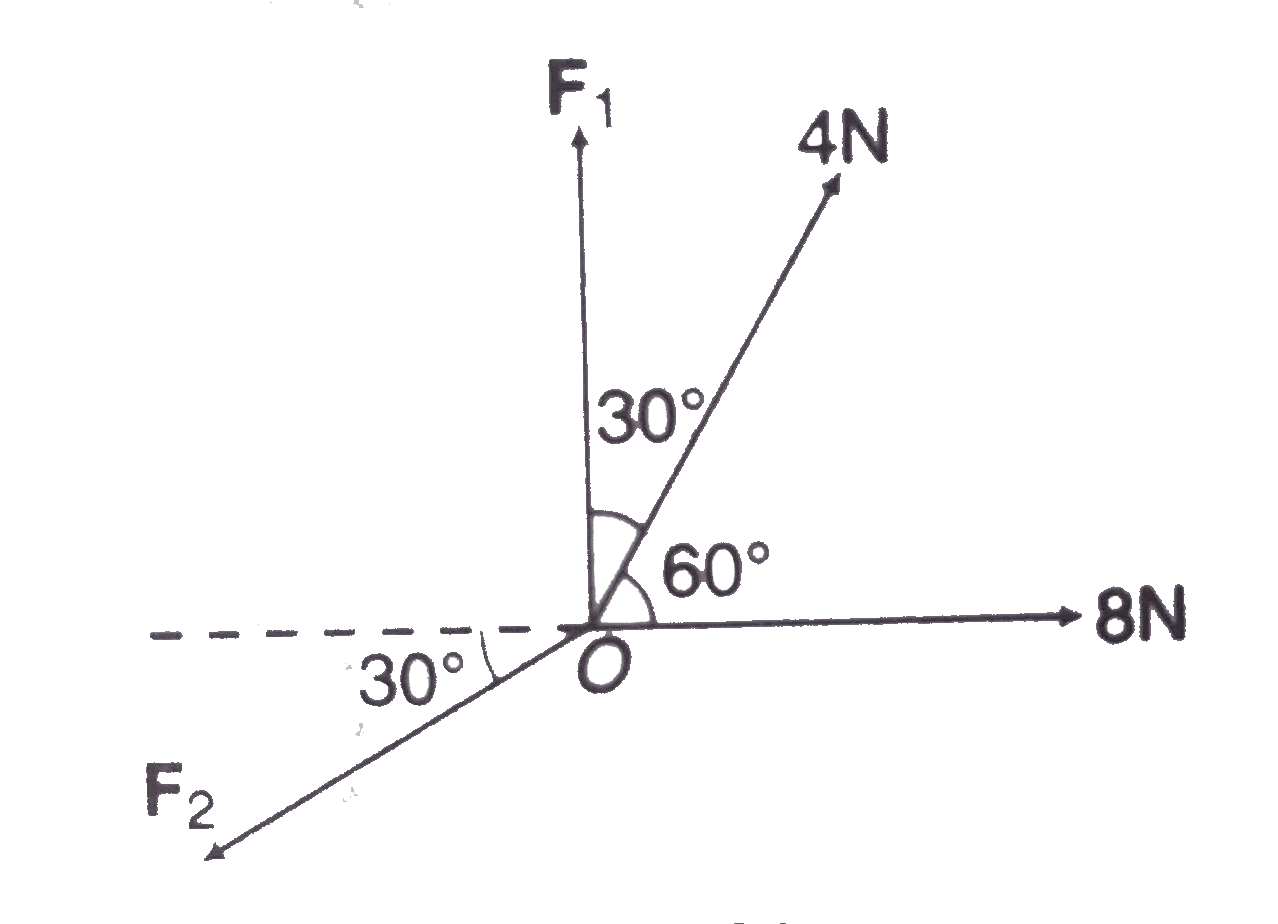
The object is in equilibrium. Hence,
(i) ∑Fx=0
∴8+4cos60∘−F2cos30∘=0
or 8+2−F2√32=0 or F2=20√3N
(ii) ∑Fy=0∴F1+4sin60∘−F2sin30∘=0
or F14√32−F22=0 or F1=F22−2√3=10√3−2√3
or F1=4√3N
Similar Questions
A homogeneous block rests against a vertical wall for which the coefficient of friction is 1/2. A force 'F' is applied to the block in the direction as shown in figure. Find the maximum magnitude of applied force 'F' such that block remains in rest.
 View Solution
View SolutionFor the circuit shown in figure the direction and magnitude of the force on PQR is :
 View Solution
View Solution
Knowledge Check
- Question 1 - Select One
There are four force acting at a point p produced by strings as shown in figure, which is at rest. The force F1 and F2 are .
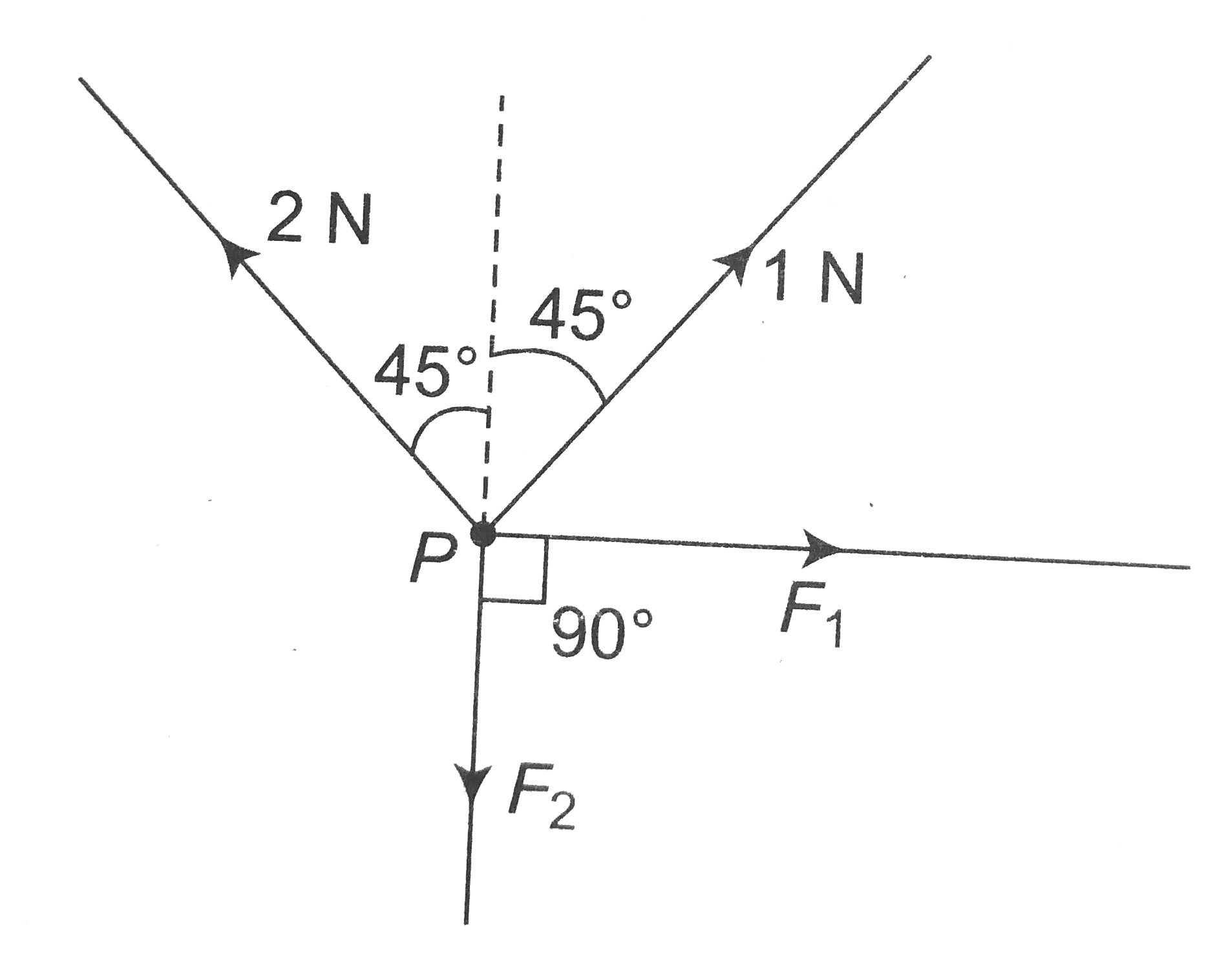 A1√2N,3√2NB3√2N,1√2NC1√2N,1√2ND3√2N,3√2N,
A1√2N,3√2NB3√2N,1√2NC1√2N,1√2ND3√2N,3√2N,
Four forces are acting on a body as shown in figure. The magnitude of resultant of the forces is
View SolutionA bob of weight 3N is in equilibrium under the action of two string 1 and 2 (figure) . Find the tension forces in the string.
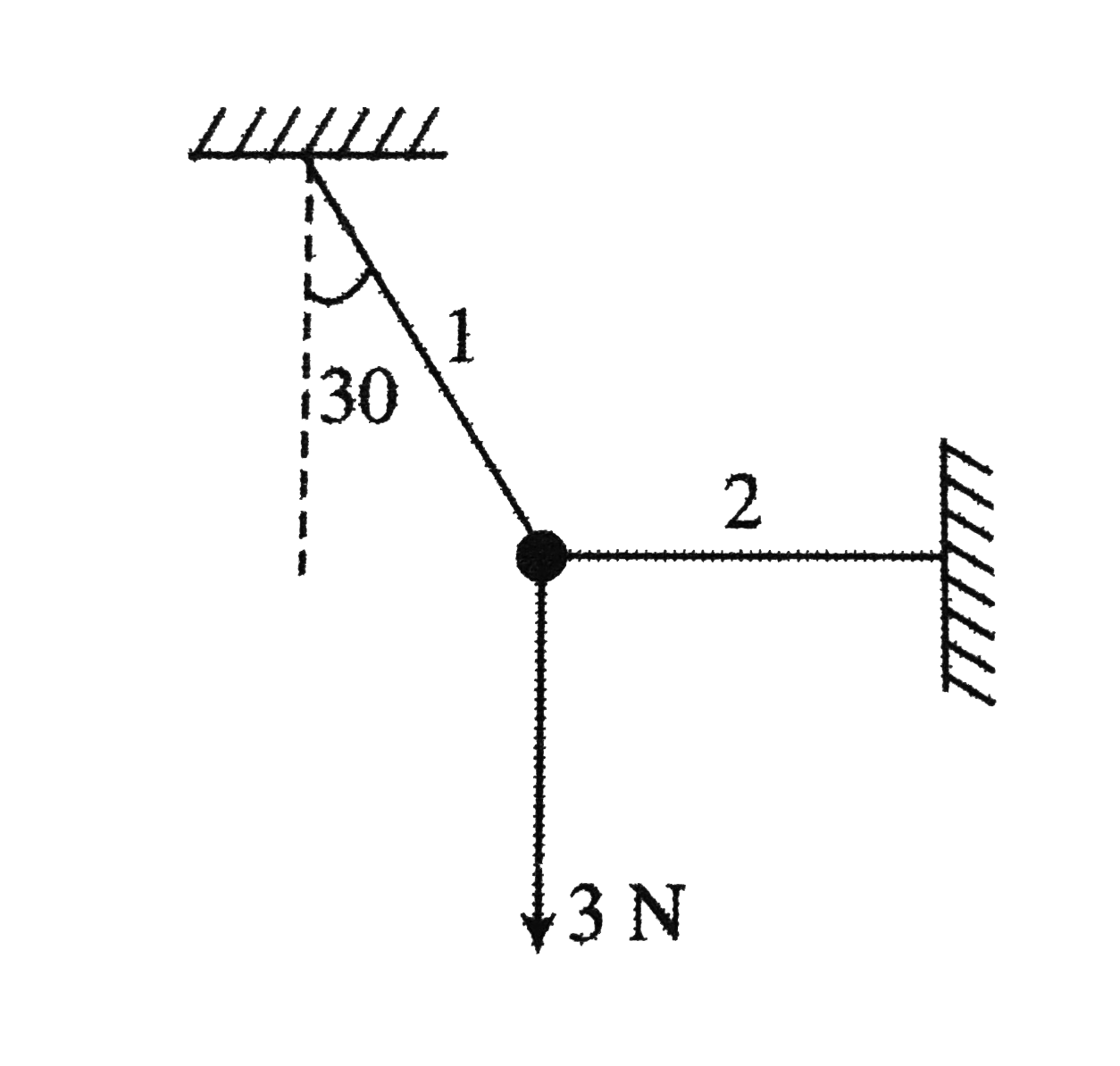 View Solution
View SolutionA body is in equilibrium under the action of three coplanar forces P,QandR as shown in figure. Select the correct statement.
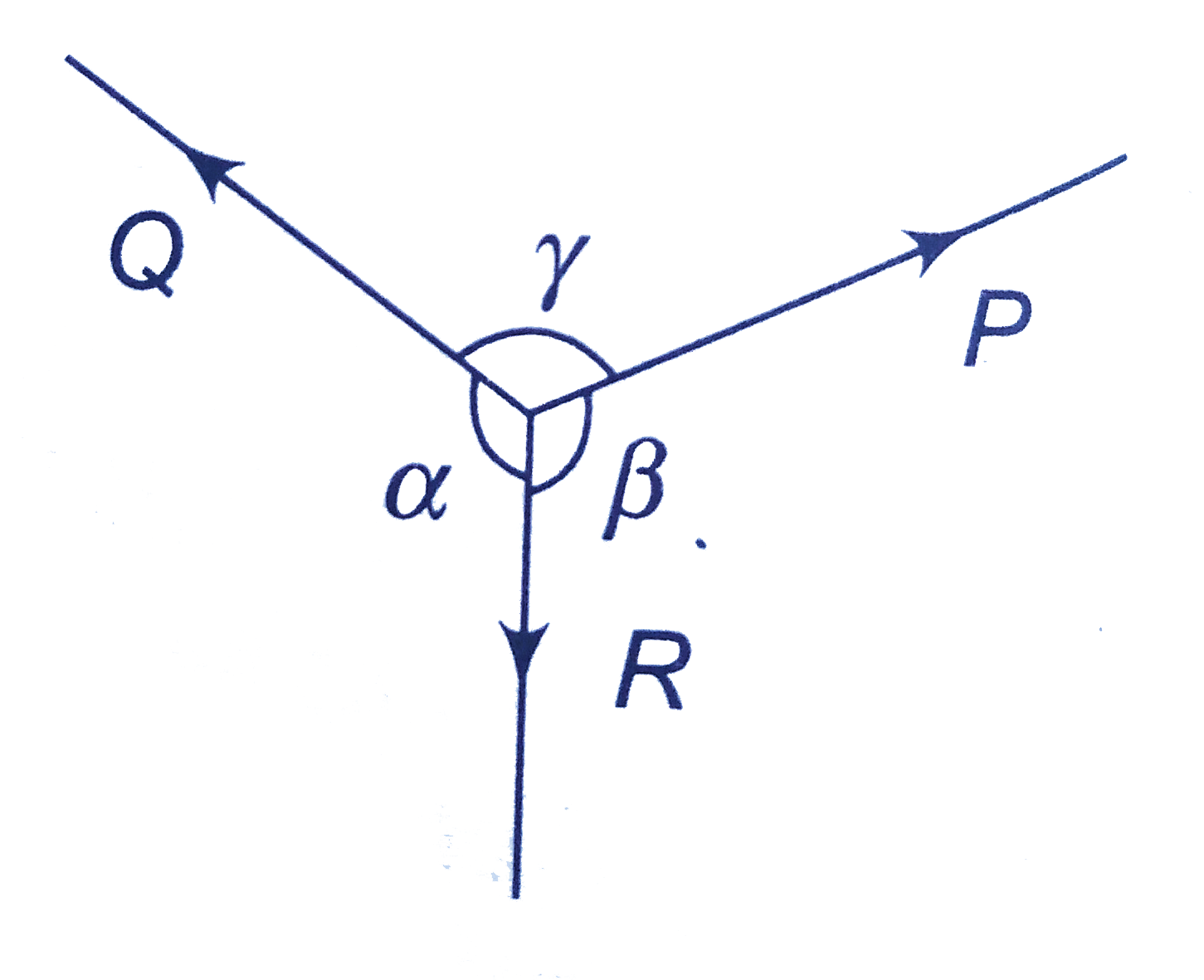 View Solution
View SolutionThere are four forces ,acting at a point P produced by strings as shown in figure. which is at rest. The forces F1andF2 are
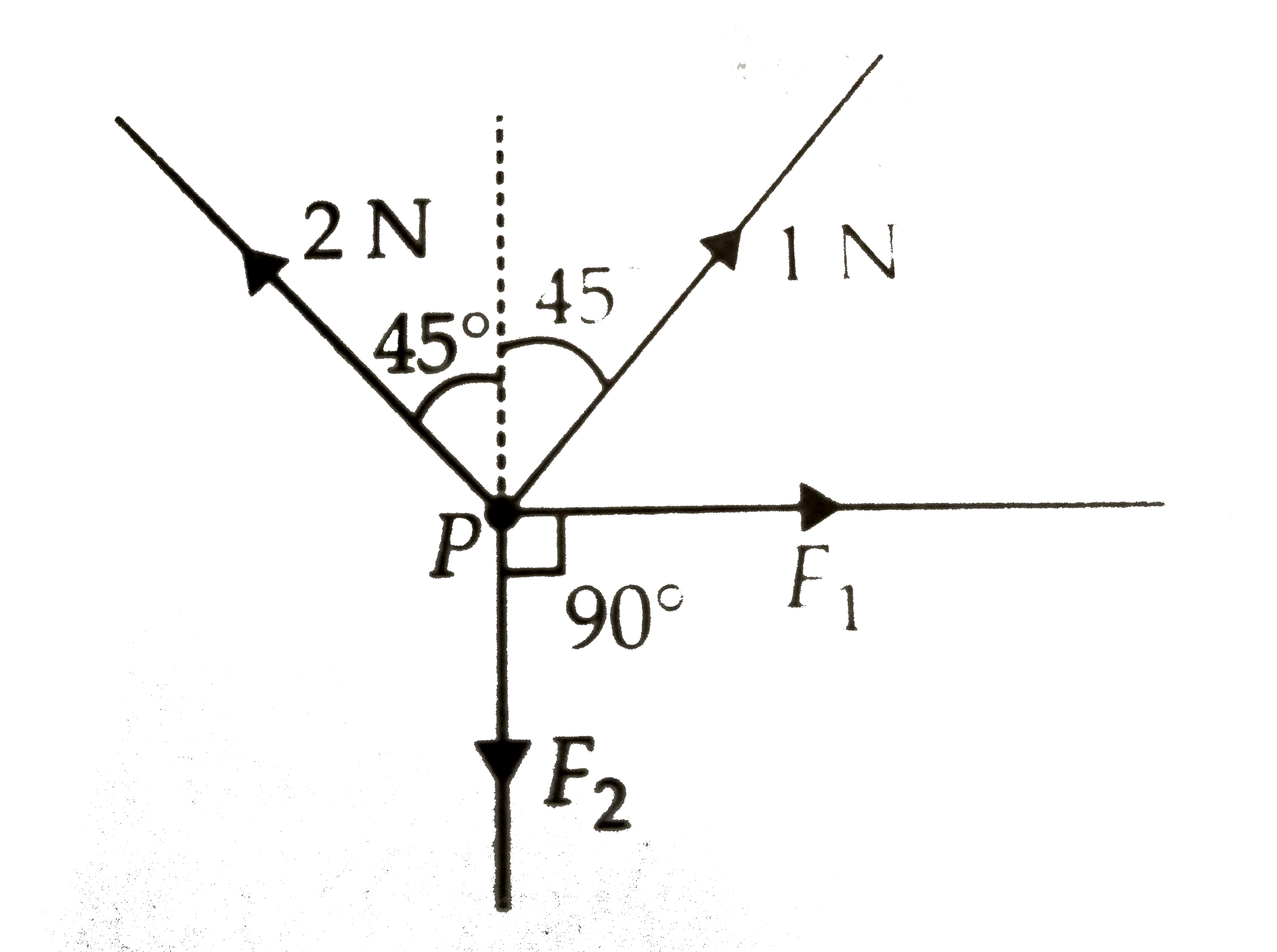 View Solution
View SolutionAccording to Newton.s second law of motion, resultant force on a particle is in the direction of acceleration of the particle. Two forcce F1andF2 are acting on a particle as shown in the figure. The acceleration of the particle is along X-axis. FInd the value of F1 (in newton)
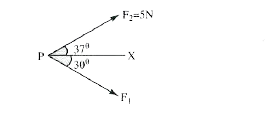 View Solution
View SolutionThree infinetely long wires 1 , 2 and 3 carry equal currents in the directions shown in fiugre. They are placed on the vertices of an equilateral triangle. Let F be the magnitude of force between any two wires.
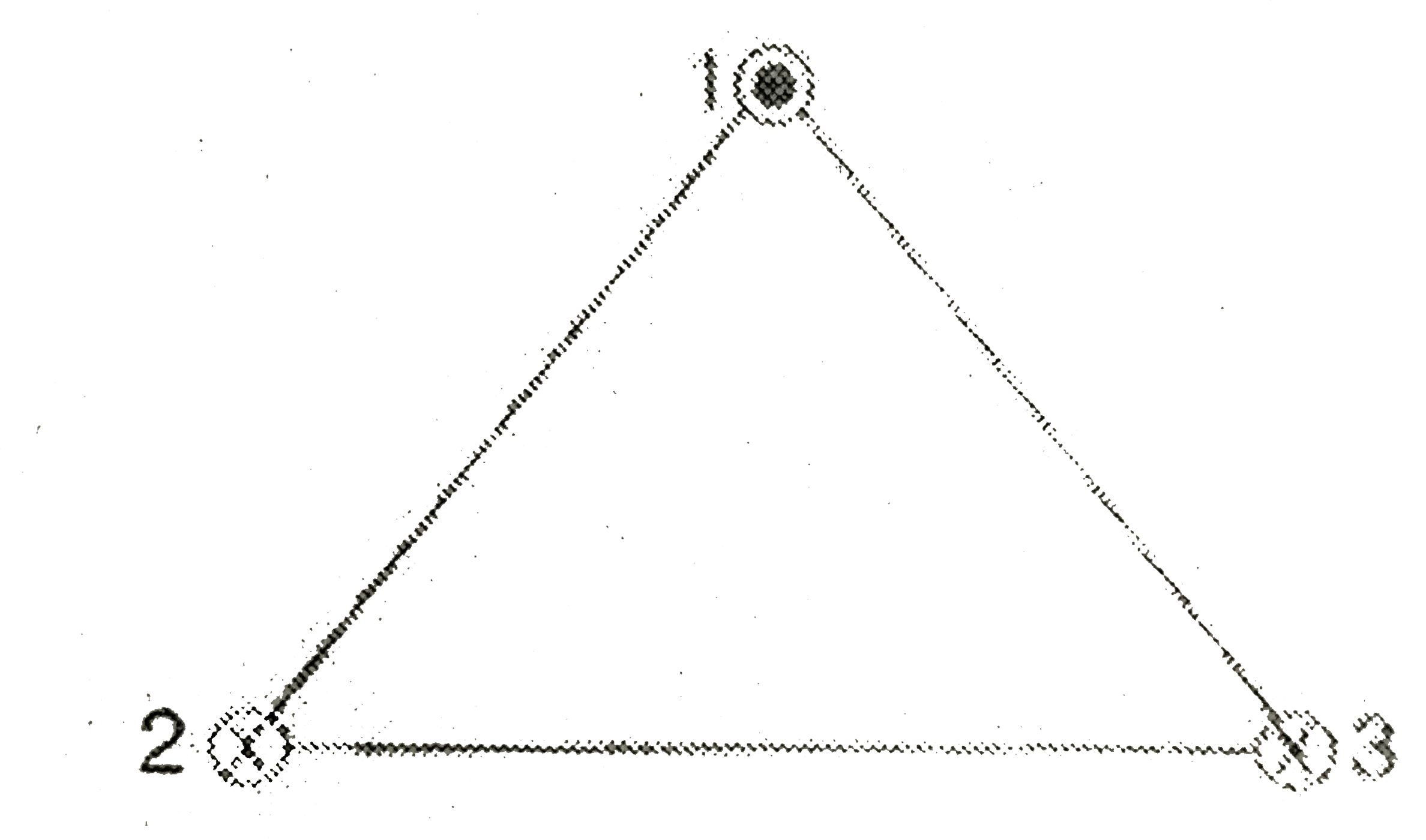
F1 is the magnitude of force on wire 1 and F2 the magnitude of force on wire 2. ThenView SolutionA wedge of mass M resting on a horizontal frictionless surface is acted upon by a force F in the horizontal direction as shown in figure. Find the net horizontal force acting on the shaded portion of the wedge.
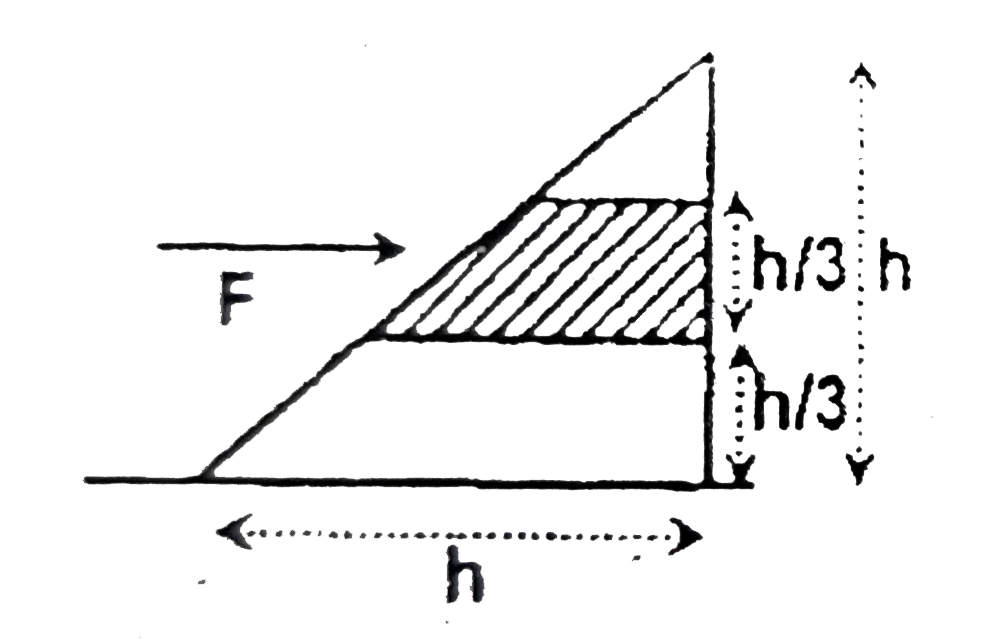 View Solution
View Solution

